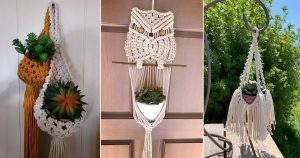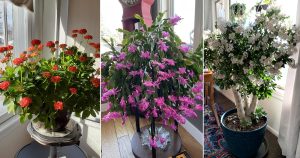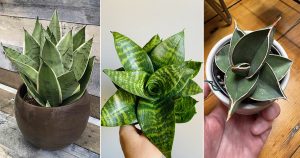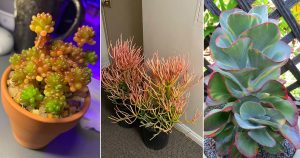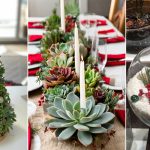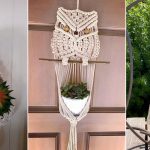Want to get some succulents with huge rosettes and gorgeous hues? Well, check out these beautiful Echeveria types.
Mostly native to the Americas, you will find various types of Echeveria all over Central America and Mexico. What really stands out about this genus is not just the sheer number of species but also the unique appearance of each of them, which we will speak about in detail in the list below!
Best Types of Echeveria
1. Lipstick Echeveria
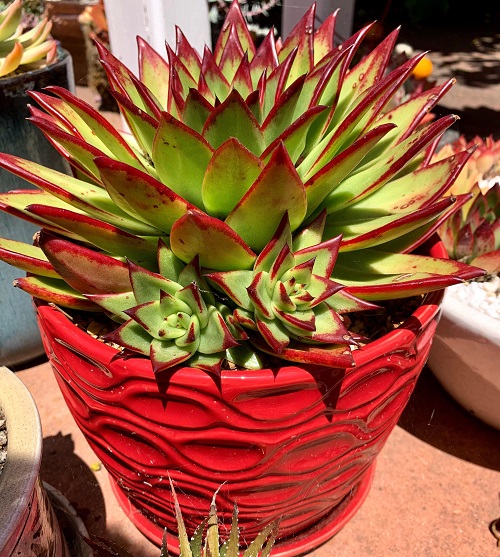
Botanical Name: Echeveria agavoides ‘Lipstick’
Starting off with one of the most unique Echeverias, this one looks super exotic for several reasons. Besides having its origins in Mexico, this plant is mostly sought-after for the gorgeous rosettes of green leaves, which boast red tips when exposed to bright sunlight. So, now you know where the name ‘Lipstick’ comes from!
It is a slow-growing, low-maintenance variety that also features fragrant, red, and orange flowers in spring.
2. Afterglow
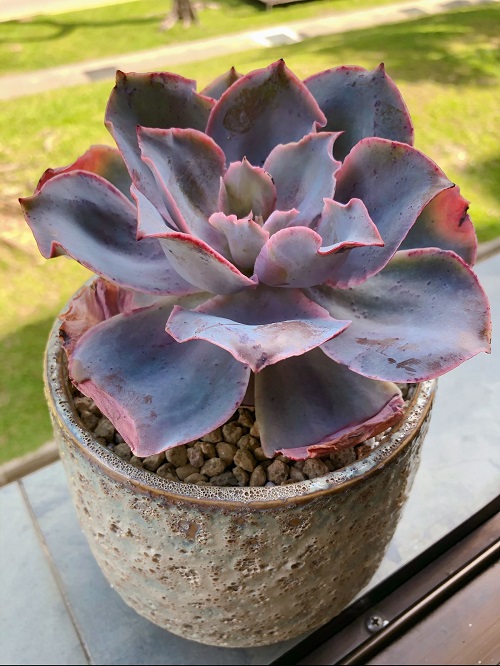
Botanical Name: Echeveria ‘Afterglow’
Its attractiveness lies in the fact that its grey-green leaves form huge rosettes and flush lavender pink and purple when exposed to bright sunlight. Come summer, Afterglow puts on a long floral show with coral, bell-shaped blooms on branching stalks.
3. Lotus Chinensis
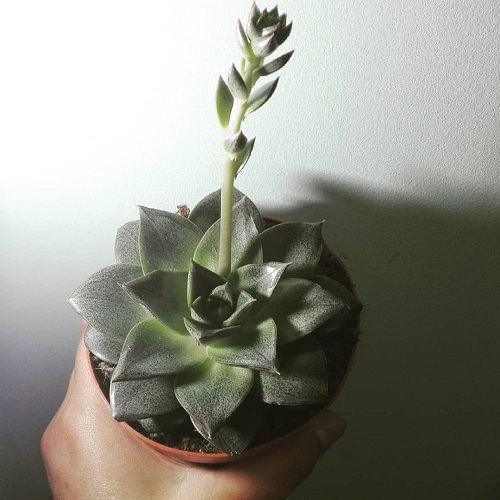
Botanical Name: Echeveria ‘Lotus Chinensis’
This compact variety is not just famous for its rosette formation that looks exactly like a lotus (hence, the name) but also because its blue-green leaves have a subtle pink hue. That’s what makes this plant so stunning!
Lotus Chinensis is super low-maintenance and will thrive easily as long as you give it bright, indirect sunlight and minimal water.
4. Laui
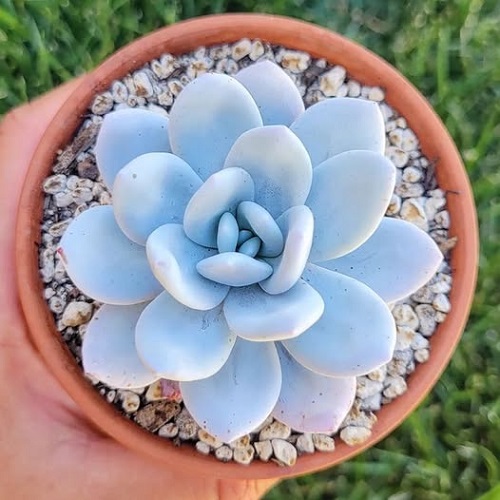
Botanical Name: Echeveria ‘Laui’
Are wonderfully unique plants your thing? Then the Laui Echeveria is the perfect succulent for you! Its powdery white leaves develop a pink tint with age and sunlight. It’s a Mexican native and a total standout in any collection.
5. Black Price
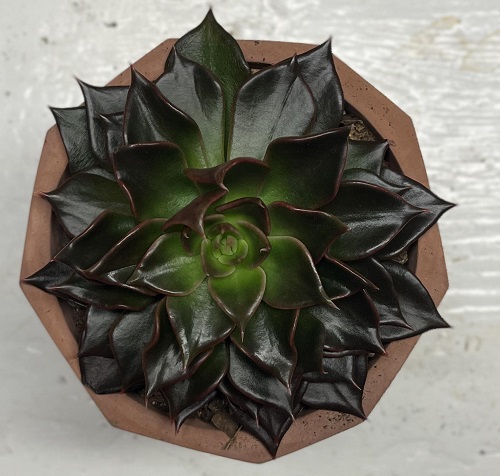
Botanical Name: Echeveria ‘Black Prince’
This Echeveria variety is adored due to its indoor-friendly characteristics and unique appearance. It is popular for its regal dark green leaves that even look black at times, and gorgeous red flowers in the winter months. Just remember to provide it with direct sunlight for at least 6 hours for the best results.
6. Perle Von Nunberg
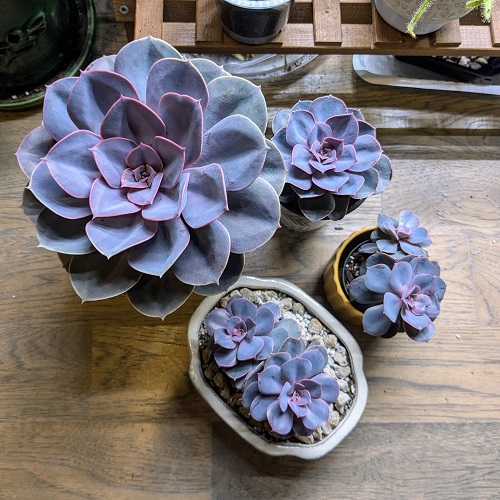
Botanical Name: Echeveria Perle Von Nunberg
Perle Von Nunberg (alternatively known as “Pearl of Nurnberg”) is a common succulent that glorifies indoor plant collections with its uniquely-shaped leaves arranged in perfect rosettes.
Originating in Africa, this relatively compact plant, reaching up to 10 inches in height, goes dormant at the beginning of winter and then blooms with bright yellow and orange flowers from mid-winter to early spring.
Pro Tip: Since this Echeveria plant is relatively fast-growing, you need to give it a bigger pot to thrive from the very start.
7. Doris Taylor
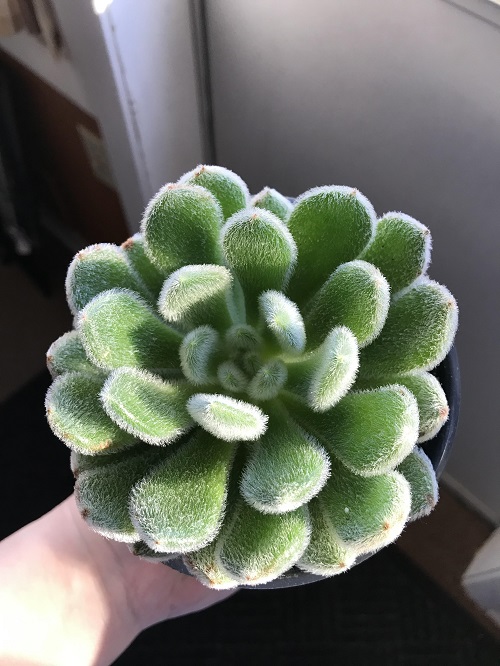
Botanical Name: Echeveria ‘Doris Taylor’
Gardeners often call this variety the “Woolly Rose” because its entire surface is covered in glistening hair. The fleshy, emerald-green rosettes grow up to 2 inches tall and can develop a pinkish hue. The whole plant stays compact, reaching only about 6 inches across.
8. Pegasus
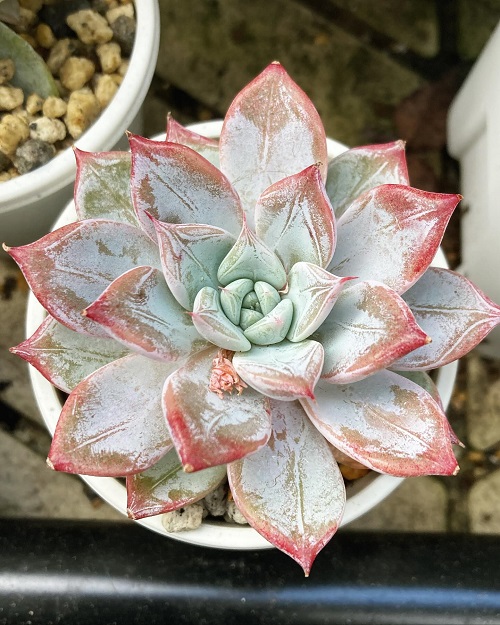
Botanical Name: Echeveria ‘Pegasus’
The name is not the only thing divine about this Echeveria variety! This slow-growing plant has flat yet attractive leaves with a pinkish tint and powdery feel. Since it is not too demanding, you can easily obtain its perfect offsets/chicks, which are exact clones of the mother Pegasus plant!
9. Red Echeveria
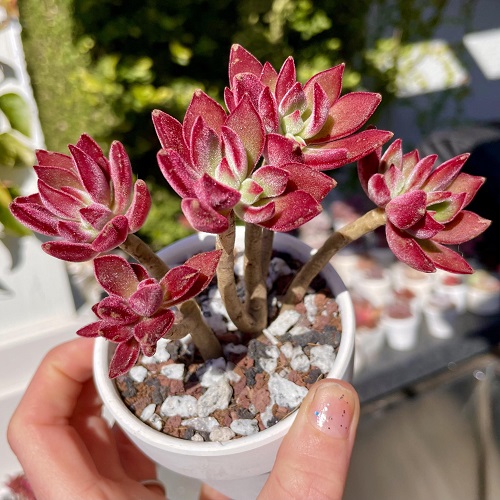
Botanical Name: Echeveria harmsii
The Red Echeveria is a sight for sore eyes! It is also popularly known as the Ruby Slipper succulent, as its dazzling red tips on the fleshy, grey-green leaves resemble the ruby slippers from “The Wizard of Oz.” It is native to Mexico and thrives in arid, desert-like conditions. Enjoy growing it in both indoor and outdoor settings, thanks to its versatile nature!
10. Mauna Loa
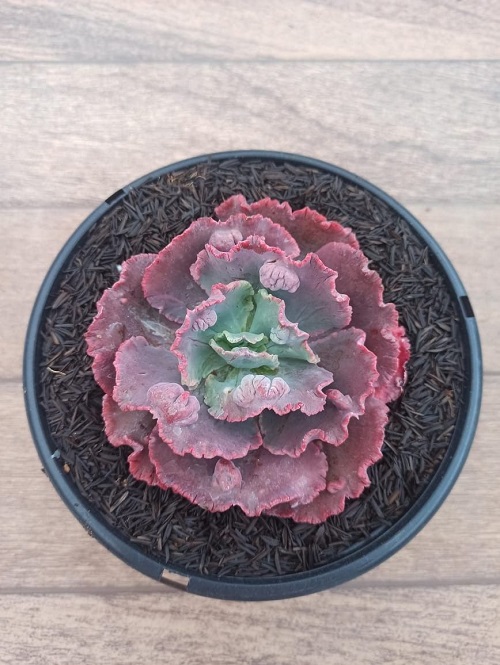
Botanical Name: Echeveria ‘Mauna Loa’
Mauna Loa is yet another spectacular Echeveria variety that boasts large rosettes of pink-blue leaves that have crinkling, frilly edges and orange-pink flowers. However, you will need a large pot and a bit of space for this plant as it grows up to 24 inches (60 cm) in diameter on stout stems.
11. Pandora Echeveria
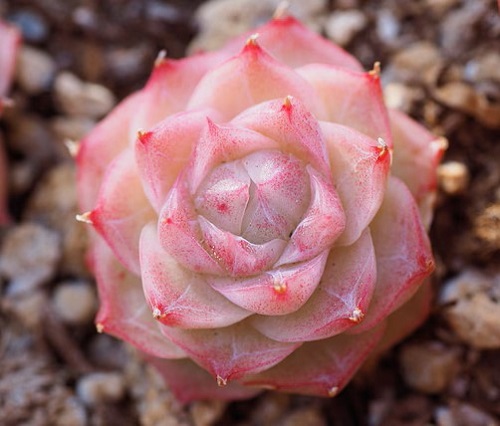
Botanical Name: Echeveria ‘Pandora’
Pandora Echeveria cannot be found naturally in the wild. This plant is a hybrid cultivar made through cross-pollination. It is a cute and compact specimen (3-6 inches in diameter), and its rosette of pale blue-green leaves tipped with a soft pink is subtly elegant.
Remember that it does well in bright and arid conditions but hates sudden temperature fluctuations.
With these varieties, we just scratched the surface of the types of Echeveria out there! Are there any varieties you love that are not mentioned here? Let us know in the comments below!

